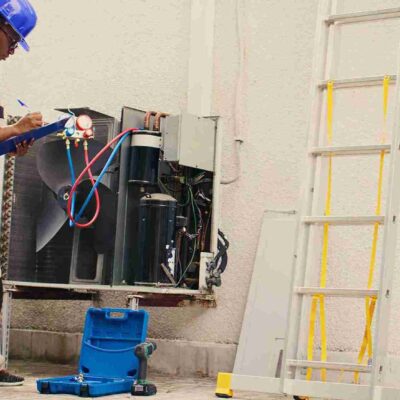When working in the power distribution or electrical contracting industry, precision and safety are paramount, especially when it comes to handling and cutting high-voltage cables. Whether you’re managing a power grid extension project or involved in industrial electrical maintenance, choosing the right type of cable cutter is essential for both efficiency and safety. Among the most commonly used tools in this domain are the HT cable cutter and the EHV cable cutter. While they may seem similar on the surface, these tools are designed for different voltage levels and cable specifications.
In this blog, we’ll break down the differences between EHV and HT cable cutters, explore their use cases, and help you determine which one is best suited for your specific requirements.
Understanding the Basics
Before diving into a comparison, it’s important to understand what HT and EHV cables are and what differentiates them:
- HT (High Tension) Cables: These are typically used for voltage ranges between 11kV and 33kV. They are commonly installed in substations, overhead lines, and commercial buildings to transmit electricity over relatively long distances.
- EHV (Extra High Voltage) Cables: These cables carry voltages above 33kV—sometimes up to 765kV or more. They are used in major power transmission systems and infrastructure projects that span across states or regions.
Given the variation in voltage and construction, the tools designed to handle these cables—namely, cable cutters—must be tailored accordingly.
HT Cable Cutter: The Reliable Workhorse
An HT cable cutter is engineered to cleanly and safely cut high-tension cables without damaging the conductor or insulation. Typically, these cutters are compact, portable, and suited for fieldwork. Many HT cable cutters are equipped with ratchet mechanisms or hydraulic power for smooth cutting action with minimal manual effort.
Key Features:
- Suitable for copper and aluminum conductors
- Insulated handles for operator safety
- Manual or battery-powered options
- Lightweight and ideal for on-site use
Ideal For:
- Maintenance teams in factories
- Medium-voltage substations
- Utility service providers
- Installation of underground cables
If your operations involve voltage levels up to 33kV, a standard HT cable cutter is usually sufficient.
EHV Cable Cutter: The Heavy-Duty Performer
Unlike HT cutters, the EHV cable cutter is a specialized tool made for cutting extremely thick, multi-layered cables that are used in extra-high-voltage applications. EHV cables are heavily insulated and armored, requiring cutters with higher force output and better blade strength.
These cutters are often hydraulic or battery-powered to manage the density and toughness of EHV cables. Many also come with advanced safety features, such as remote operation, auto-retracting blades, and overload protection.
Key Features:
- Designed for cutting cables above 33kV
- Hydraulic or electro-hydraulic operation
- High-grade steel blades for reinforced cable cutting
- Suitable for both live and de-energized systems (with specific models)
Ideal For:
- Large-scale transmission line projects
- National grid maintenance
- Infrastructure developments
- Specialized energy contractors
When dealing with cables in the 66kV to 400kV+ range, the EHV cable cutter becomes an absolute necessity.
Key Differences at a Glance
| Feature | HT Cable Cutter | EHV Cable Cutter |
| Voltage Compatibility | Up to 33kV | Above 33kV (typically 66kV – 765kV) |
| Blade Type | Standard steel | Reinforced or heat-treated steel |
| Power Source | Manual / battery | Hydraulic/battery-powered |
| Use Case | Commercial, Industrial Sites | Grid Projects, Utility Infrastructure |
| Portability | Lightweight, Field-Friendly | Bulkier, often stationary, or wheeled |
Choosing the Right Tool
So, which cable cutter should you invest in? The answer lies in your operational needs. If you’re mostly dealing with medium-voltage systems in commercial or urban environments, an HT cable cutter will offer the portability and efficiency you need. It’s a cost-effective option that delivers reliable results in standard scenarios.
On the other hand, if your projects involve heavy-duty transmission lines or regional power distribution networks, investing in an EHV cable cutter is a no-brainer. The tool’s power and safety features are tailored to meet the rigorous demands of high-voltage operations.
Safety Considerations
No matter which tool you choose, safety should never be compromised. Always follow the manufacturer’s operating guidelines, wear proper PPE, and ensure that the cable is properly de-energized before cutting—unless your cutter is certified for live-line work.
Routine inspection and maintenance of cable cutters also go a long way in preventing accidents. Dull blades, worn handles, or fluid leaks (in hydraulic models) should be addressed immediately to avoid operational hazards.
Final Thoughts
Both HT and EHV cable cutters are critical tools for electrical professionals, but they serve very different purposes. While the HT cable cutter is perfect for everyday industrial use, the EHV cable cutter is built for high-stakes, high-voltage jobs. Understanding their distinctions helps ensure you not only pick the right tool but also uphold efficiency, safety, and longevity in your work.
Investing in the right cutter isn’t just about handling cables—it’s about handling your responsibilities with professionalism and preparedness. Choose wisely, as the right decision can significantly reduce downtime, enhance project outcomes, and ensure the safety of both personnel and infrastructure in demanding electrical environments.





